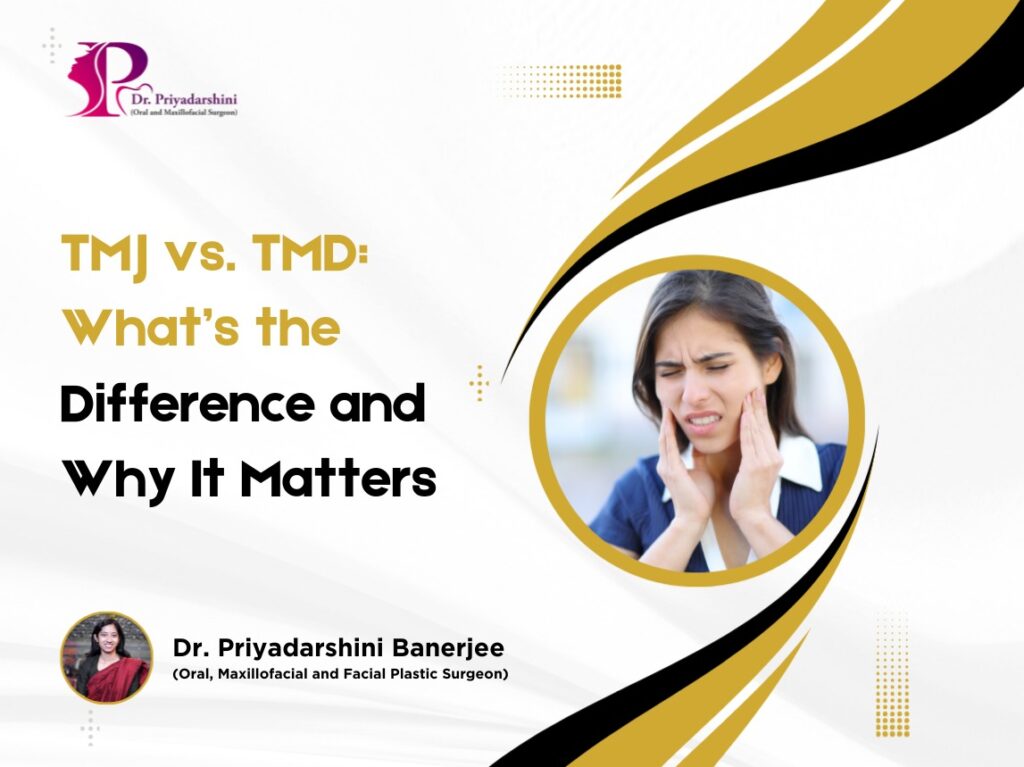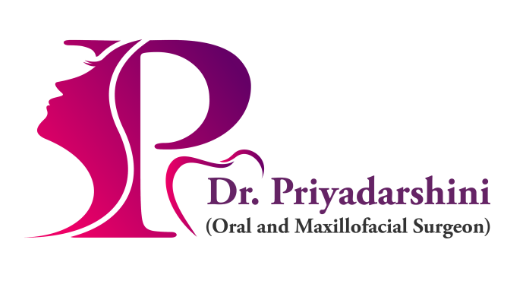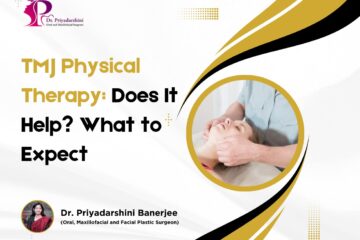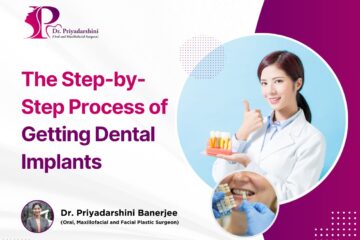TMJ vs. TMD:
What’s the Difference and Why It Matters
When it comes to jaw pain, popping sounds, or difficulty chewing, people often use the terms TMJ and TMD interchangeably. But are they the same thing? The short answer is no. Understanding the difference between TMJ and TMD can help you identify the right treatment and avoid unnecessary confusion.
In this article, we’ll break down what TMJ and TMD mean, common symptoms, causes, and why knowing the difference really matters for your oral health.

What Is TMJ?
TMJ stands for temporomandibular joint.
It is the hinge-like joint that connects your jawbone to your skull, located just in front of your ears. This joint allows you to:
- Open and close your mouth
- Chew food
- Speak clearly
- Yawn comfortably
What Is TMD?
TMD stands for temporomandibular disorder.
This refers to a group of conditions that cause pain or dysfunction in the temporomandibular joint, the surrounding muscles, and the jaw.
TMD is a medical condition, not a body part. When your TMJ isn’t working properly due to stress, injury, or misalignment, you may experience TMD.
Common Symptoms of TMD
If you have TMD, you may notice:
- Jaw pain or tenderness
- Clicking, popping, or grating sounds when moving your jaw
- Headaches or earaches
- Difficulty chewing or opening your mouth fully
- Facial pain and muscle stiffness
- Jaw locking (stuck open or closed)
What Causes TMD?
Several factors can contribute to TMD, such as:
- Teeth grinding or clenching (bruxism)
- Stress and anxiety
- Jaw injury or trauma
- Arthritis in the joint
- Poor bite alignment
- Excessive gum chewing or nail biting
TMJ vs. TMD: The Key Difference
- TMJ = the joint itself
- TMD = the disorder affecting the joint and surrounding muscles
Think of it like this: Everyone has TMJs, but not everyone develops TMD.
Why Does the Difference Matter?
Many people mistakenly say “I have TMJ” when they mean TMD. While it’s a common shorthand, the correct term is important because:
- Accurate Diagnosis – Knowing the difference helps healthcare professionals provide proper treatment.
- Better Communication – Clear language avoids confusion when discussing your symptoms with your dentist or doctor.
- Effective Treatment – TMD can be managed with lifestyle changes, dental treatments, or physical therapy, but only if it’s diagnosed correctly.
Treatment Options for TMD
If you’re experiencing jaw pain or discomfort, here are common treatments:
- Self-care at home: Apply ice or warm compresses, eat soft foods, and avoid excessive chewing.
- Stress management: Practice relaxation techniques to reduce clenching.
- Dental treatments: Night guards or bite adjustments.
- Medications: Anti-inflammatory drugs or muscle relaxants.
- Physical therapy: Jaw exercises and massage.
- Surgery (rare cases): Only for severe, unresponsive TMD.
Final Thoughts
Understanding the difference between TMJ (the joint) and TMD (the disorder) is crucial for maintaining jaw health. If you experience jaw pain, stiffness, or difficulty chewing, don’t ignore it — consult a dentist or oral health specialist for a proper evaluation.
Early treatment can prevent long-term complications and help you regain comfort in everyday activities like eating and speaking.
Book an appointment today!
If you have any general or medical enquiry, feel free to contact us.



